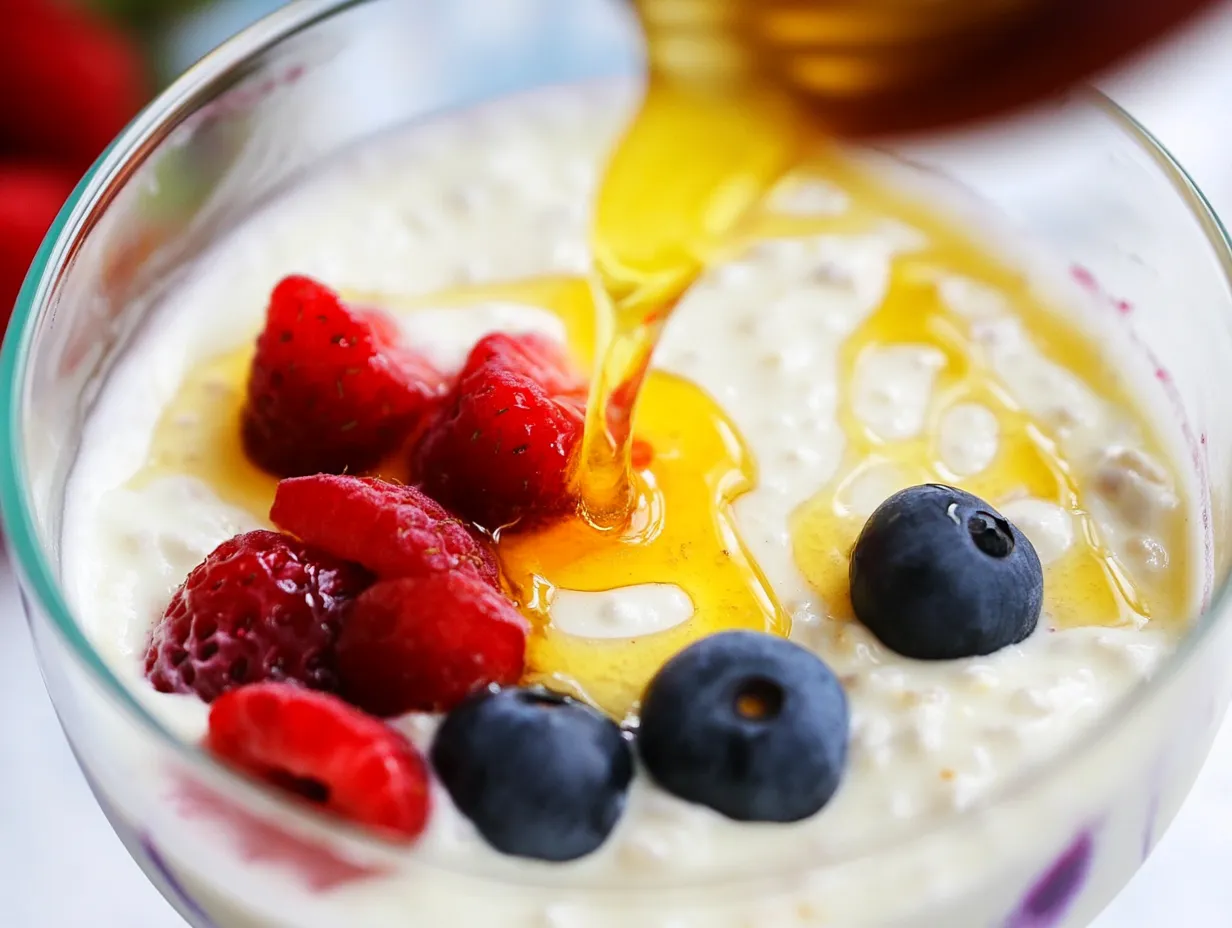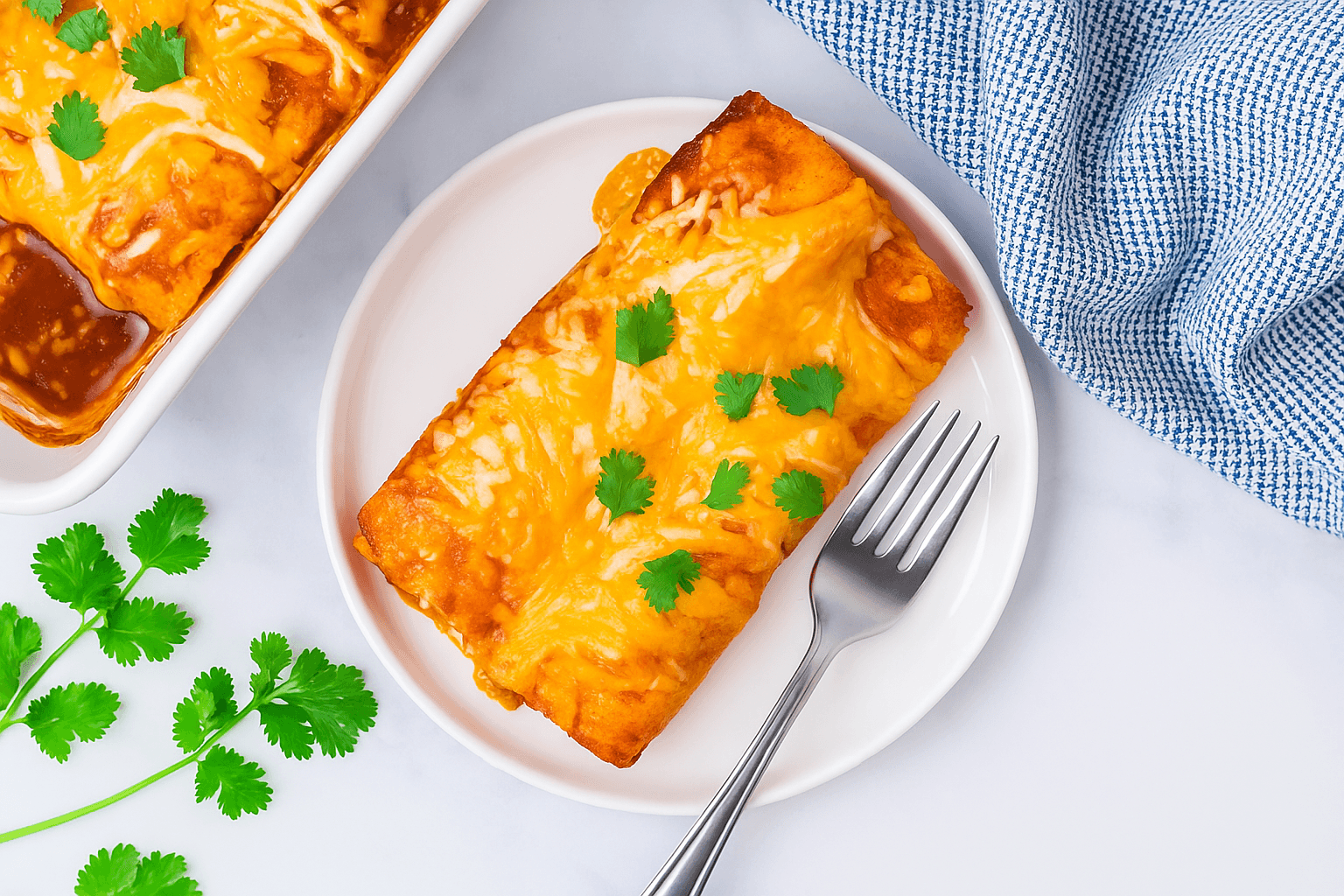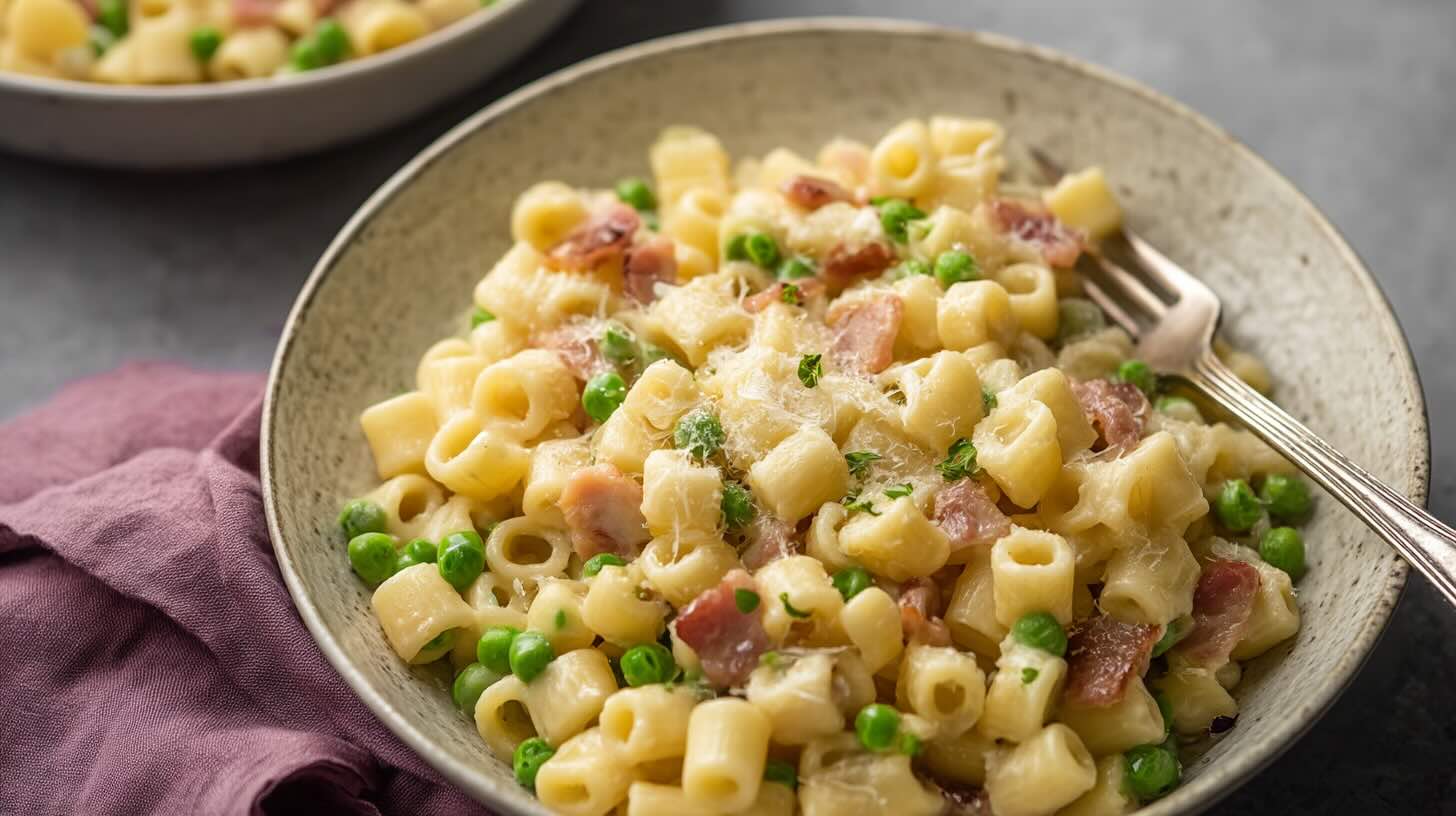Is it OK to melt cottage cheese? If you’ve ever looked at a tub of cottage cheese in your fridge and wondered whether it could turn into a warm, creamy addition to your dishes, you’re not alone! While it might seem tricky, melting cottage cheese is actually a simple and delicious way to enhance your meals.
Why consider melting cottage cheese? It’s lightweight, easy to use, and perfect for pasta, dips, and even baked dishes. Plus, it’s packed with protein, making it a healthy addition to almost any recipe.
In this guide, we’ll walk you through the best ways to melt cottage cheese safely and easily. So grab your spoon (or whisk!), and let’s get started—you’re about to discover a whole new way to enjoy this versatile ingredient!
Table of contents
Benefits and Common Uses of Melting Cottage Cheese
Recipes That Call for Melted Cottage Cheese
Melted cottage cheese might not be the first ingredient that comes to mind, but it’s a hidden gem in many recipes. From soups to desserts, this protein-packed cheese can transform a dish in unexpected ways.
- Soups & Casseroles – A spoonful of melted cottage cheese adds a smooth, creamy texture to soups, making them richer and more satisfying. In casseroles, it acts as a protein-rich binder while providing a mild cheesy flavor.
- Dips & Spreads – Simply melt and mix cottage cheese with seasonings for a creamy dip perfect for chips or fresh veggies.
- Pasta Sauces – Looking for a healthier alternative to heavy cream? Melted cottage cheese creates a creamy, guilt-free pasta sauce.
- Baking – Need extra moisture in cheesecakes or brownies? Melted cottage cheese blends seamlessly, enhancing texture without adding extra fat.
One of the best things about melting cottage cheese is how easy it is. No advanced cooking skills needed—just heat it slowly, and you’re done! So, is it OK to melt cottage cheese? Absolutely! With so many possibilities, it’s a simple way to elevate your meals.
Nutritional Benefits of Melting Cottage Cheese
Melted cottage cheese isn’t just delicious—it’s packed with nutrition, making it a great addition to your meals.
- Protein Powerhouse – With its high protein content, cottage cheese helps keep you full and energized throughout the day.
- Low-Fat Alternative – Compared to other cheeses, cottage cheese is naturally lower in fat, making it a great choice for those watching their diet.
- Rich in Calcium – A good source of calcium, it supports strong bones and overall bone health.
- Vitamin Boost – Loaded with essential vitamins like B12, which plays a key role in maintaining energy levels.
Another bonus? Melted cottage cheese is a sneaky way to add nutrition to meals—especially for picky eaters. Whether blended into sauces, dips, or pasta, it enhances both flavor and health benefits without being too noticeable.
So, is it OK to melt cottage cheese? Absolutely! Not only is it safe, but it’s also a smart and nutritious addition to your favorite dishes.

The Science Behind Melting Cottage Cheese
How Cottage Cheese Reacts to Heat
Unlike traditional cheeses, cottage cheese doesn’t melt into a stretchy, gooey texture. Instead, due to its high moisture and protein content, it softens and may separate slightly when heated.
As the curds warm up, they break down, creating a creamy consistency perfect for soups, sauces, and dips. This doesn’t mean the cheese is ruined—it’s simply how cottage cheese reacts to heat. When heated gently, it blends well into dishes without becoming dry or clumpy.
So, is it OK to melt cottage cheese? Absolutely! The key is slow, controlled heating and occasional stirring. Think of it like melting butter—gentle heat leads to the best results.
- Softens rather than melts
- Works best with low, steady heat
- Adds creaminess to soups and sauces without becoming stringy
Factors That Affect Melting Consistency
Several factors influence how well cottage cheese melts and blends with your dish. First, the fat content matters—a higher fat version often melts more smoothly. Next, how fresh the cheese is matters. Cheese that is new tends to keep its creamy texture better.
Also, how you heat it makes a big difference. Using low, steady heat prevents the curds from drying out or clumping. In addition, adding a bit of liquid, like milk or broth, can help create a smoother consistency.
So, is it OK to melt cottage cheese? Yes, as long as you keep these factors in mind. It’s kind of like baking cookies—follow a few simple rules, and the results will be delicious.
- Higher fat content melts better
- Fresher cheese stays creamy
- Low, steady heat is key
- Adding liquid helps smooth the consistency

Is it OK to melt cottage cheese? What You Should Know
Understanding the Safety of Heating Dairy Products
Yes! Cottage cheese is completely safe to heat, as long as you do it the right way. Since it’s pasteurized, any harmful bacteria have already been removed, so you don’t have to worry about safety when cooking with it.
However, cottage cheese doesn’t melt like regular cheese. Instead of turning gooey and stretchy, it softens and may separate into curds and liquid. This is normal and doesn’t mean the cheese has gone bad.
To keep it smooth and creamy, follow these simple tips:
- Use low heat – If you heat it too fast, it can clump or dry out.
- Add a little liquid – A splash of milk or broth helps prevent separation.
- Stir gently – Mixing it slowly while it warms up helps keep a smooth texture.
So, is it OK to melt cottage cheese? Yes! Just handle it with care, and it will turn out creamy and delicious. Think of it like melting chocolate—slow and steady gives the best results!
How to Store Leftover Melted Cottage Cheese
If you have leftover melted cottage cheese, don’t worry—it’s easy to store! Just follow these simple steps to keep it fresh and tasty.
- Let it cool completely – Never store hot food in the fridge, or it can create excess moisture and spoil faster.
- Use an airtight container – This prevents it from drying out or absorbing other fridge smells.
- Refrigerate and use within 3 days – Melted cottage cheese stays good for a few days, but after that, the texture might change.
- Reheat gently – Use low heat when warming it up to keep it creamy. Stir occasionally to help it blend back together.
- Avoid freezing – Freezing can change its consistency, making it grainy instead of smooth.
So, is it OK to melt cottage cheese and save it for later? Yes, but only for a few days! Store it properly, and it’ll taste just as good when reheated. Think of it like leftover pizza—keep it fresh, and you’ll still enjoy it the next day!
Methods to Melt Cottage Cheese: Tips for Success
Best Tools and Techniques for Melting Cottage Cheese
Melting cottage cheese is easy when you have the right tools and techniques. Here’s how to do it the best way:
- Use a nonstick pan or double boiler – A nonstick pan prevents sticking, while a double boiler gives gentle, even heat.
- Keep the heat low – High heat can make the cheese clump or burn. Slow and steady works best.
- Stir gently – Use a silicone spatula or wooden spoon to mix while it warms.
- Add a little liquid – A splash of milk or broth helps make it smooth and creamy.
- Whisk for extra creaminess – If you want an even smoother texture, whisk the cheese as it heats.
So, is it OK to melt cottage cheese? Yes! Just follow these simple steps, and you’ll get a creamy, delicious result every time.
How to Melt Cottage Cheese: Step-by-Step Guide
Want smooth, creamy melted cottage cheese? Just follow these simple steps:
- Start with low heat – Place the cottage cheese in a nonstick pan over low heat.
- Add liquid – Pour in a little milk or broth to help it melt evenly.
- Stir gently – Use a spoon or whisk to mix slowly, preventing clumps.
- Be patient – Cottage cheese softens rather than melts like regular cheese. Avoid turning up the heat too quickly.
- Remove from heat – Once it reaches a creamy texture, take it off the stove and enjoy!
So, is it OK to melt cottage cheese? Yes! Just take your time, and you’ll get a delicious, creamy result. Think of it like making hot chocolate—slow and steady for the best texture!”
“Discover the perfect balance of creamy and crispy by trying our guide to Cottage Cheese Chips, a delightful snack for any occasion.”

Alternatives to Melting Cottage Cheese in Recipes
Substitutes for Melted Cottage Cheese in Cooking
If you’d rather not melt cottage cheese, don’t worry, I got you! There are plenty of other ingredients that can give you a similar creamy texture in recipes. Here are some of the best alternatives:
- Ricotta cheese – Soft and smooth, ricotta is a great swap for melted cottage cheese in pasta dishes like stuffed shells, lasagna, or even creamy dips. It has a mild flavor and blends well when heated.
- Cream cheese – This is one of the best substitutes for a rich, creamy texture. It melts smoothly and works well in sauces, spreads, and baked dishes like cheesecakes.
- Greek yogurt – While it doesn’t melt like cheese, Greek yogurt mixes easily into soups and sauces, adding creaminess with a little tang. It’s also packed with protein, making it a healthy alternative.
- Silken tofu – A great plant-based option, silken tofu has a smooth consistency when blended. It works well in creamy pasta sauces, soups, and even desserts.
- Mashed cottage cheese – If you don’t want to melt it, try blending or mashing it until smooth. This keeps the texture creamy without needing to heat it.
So, is it OK to melt cottage cheese? Yes! But if you’re looking for different options, these substitutes work just as well depending on the recipe.
Creative Ways to Use Cottage Cheese Without Melting
Cottage cheese is a super versatile ingredient—you don’t always have to melt it to enjoy it! Try these creative ways to use it in your meals:
- As a topping – Swap out sour cream and use cottage cheese on baked potatoes, tacos, or toast for a creamy, protein-rich option.
- With fruit – Mix it with fresh berries, peaches, or bananas for a quick, healthy snack. Add a drizzle of honey or cinnamon for extra flavor!
- In smoothies – Blend cottage cheese into smoothies for a thick, creamy texture and extra protein. It works well with bananas, peanut butter, or cocoa powder.
- For dips & spreads – Mix it with herbs, garlic, or lemon juice for a savory dip or spread that pairs well with crackers or veggies.
- For baking – Replace some butter or cream in muffins, pancakes, or cakes to make them extra moist and tender.
So, is it OK to melt cottage cheese? Yes! But these ideas prove it’s just as useful in the kitchen without melting.
“Enhance your cottage cheese dishes with creative pairings—explore how Cottage Cheese Flatbread adds a savory touch to any meal.”
Frequently Asked Questions (FAQs)
What happens when you melt cottage cheese?
When heated, cottage cheese softens but doesn’t melt like regular cheese. Instead, the curds break down slightly, creating a creamy texture. It may separate a little due to its high moisture content, but this is completely normal! It works best in soups, sauces, and dips.
Is it safe to heat up cottage cheese in the microwave?
Yes! Just use a microwave-safe bowl and heat it in short intervals, stirring in between. This helps prevent clumping. For extra smoothness, add a splash of milk or broth while heating.
Can you make cottage cheese taste like cream cheese?
Absolutely! Just blend it until smooth, then add a pinch of salt for a neutral taste or a little sugar for sweetness. You can use it as a spread on toast, bagels, or even in dips.
Does cottage cheese lose protein when heated?
No, the protein remains, even if the texture changes slightly. You’ll still get all the benefits of its high protein content when using it in cooked dishes.
Does melting cheese destroy nutrients?
Not really! Some heat-sensitive vitamins may break down slightly, but the protein and calcium stay intact. So, melting cottage cheese is still a great way to add nutrition to your meals.
Final Thoughts: Enjoy Cottage Cheese Your Way!
So, is it OK to melt cottage cheese? Yes! And now you know how to do it the right way.
Melted cottage cheese is perfect for soups, casseroles, dips, and pasta sauces—adding creaminess without the extra fat of heavy cream. Just remember to heat it gently and add a little liquid to keep it smooth.
But melting isn’t the only way to enjoy cottage cheese! Try it in smoothies, as a topping for baked potatoes, or mixed with fruit for a healthy snack. It’s packed with protein, calcium, and flavor, making it a great addition to any meal.
Now it’s time to get creative! Whether you melt it or enjoy it fresh, cottage cheese is a versatile, nutritious, and delicious ingredient. Try it in your next recipe and see how it transforms your dish!





